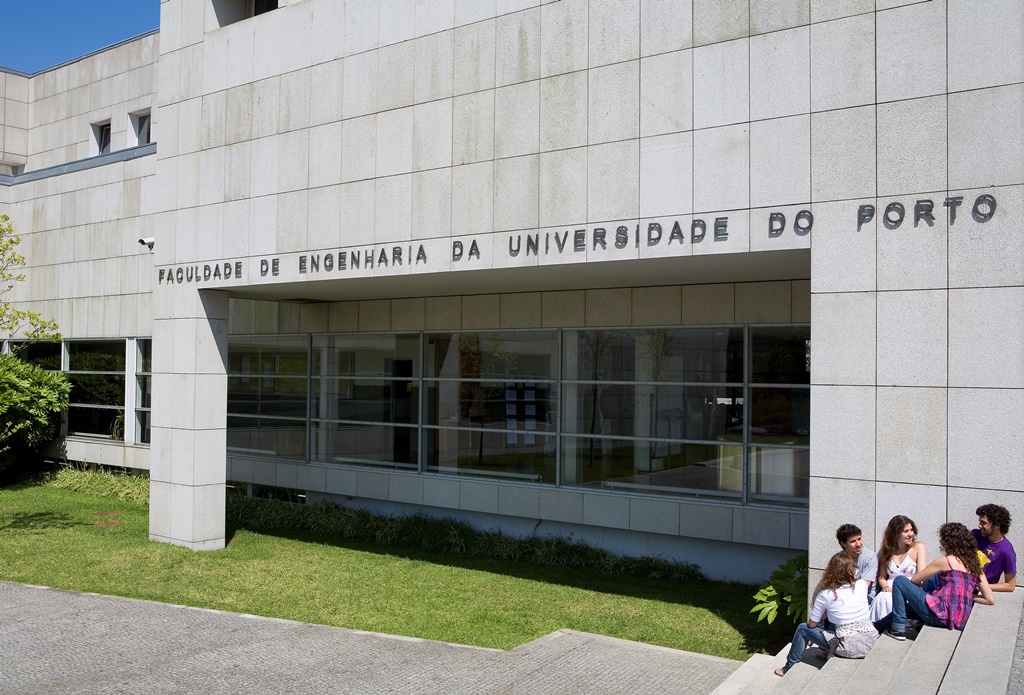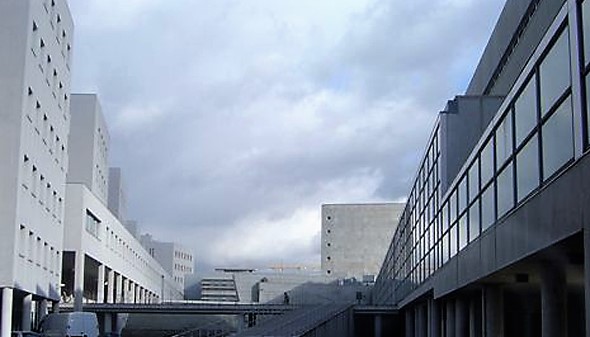Granite rock intrudes schist from the Metamorphic Complex of Foz do Douro, in the north. To the south are leucrocratic augen gneisses. Explanatory display panel.
Núcleo Museológico do Departamento de Engenharia de Minas, Porto
Within FEUP’s (Faculty of Engineering of the University of Porto) Library and Information Services, the Museum Unity is responsible for the management of the museum collections of the Faculty. Based on a polynucleated museum layout model, the FEUP museum project comprises, amid others, the museology nucleus of the Mining Engineering Department, where material and immaterial heritages are gathered representing the history of Research and Teaching related to the "art of mining" at FEUP - <a href="http://inarte.fe.up.pt/inweb">InWeb</a>
CHARACTERISTICS
City: Porto
Postal Code: 4200 - 465
Telephone: 225081442
Email: roteirominas@fe.up.pt
Website: http://inarte.fe.up.pt/inweb
From 00:00:00 to -.
From 00:00:00 to -.
Weekend and Holidays Schedule:
From 00:00:00 to 00:00:00.
From 00:00:00 to 00:00:00.
Exceptions:
The FEUP museum is temporarily closed to complete reorganization. However, information related to the museum collections is available online.
Paid Entry:
0€
Discount Policy:
-
Specific Conditions:
-
Method:
-
Difficulty Level:
-
Group Visits:
No
Guided Tours:
No
Observations:
-
Throughout its history, FEUP has preserved a wide set of scientific apparatus and models that belonged to other museums, offices and study collections of the faculty. The selective safeguard included other out-of-use laboratory experiment support instruments, resulting research equipments and products. The decision to create a professional museum unity at FEUP came in 2004.
Activity Program:
Since the creation of the FEUP museum, a variety of museological and historical-value objects have been identified, gathered and studied, that belong today to the virtual museum. FEUP museum’s program of activities, as part of the Library and Information Services has always been close associated to the dynamics, challenges, transformations and needs presented by the academic community it belongs to. In this context, FEUP museum responsibles have been reevaluating its aims and goals, initially centered upon recollecting the past, but nowadays, altering its program to be able to narrow relations and to engage in networking with other pedagogical, scientific and cultural agents within FEUP, as well as external partners.
Study and Research Unit:
FEUP museum has oriented its research activities to enable a better understanding of the Faculty’s contributions and the other higher education institutions FEUP belongs to, to the development and innovation of national technology. Thus, the study has been conducted also to archive and bibliography documentation that within the collections frame their importance for the study of Technical history and Engineering Teaching in Portugal.
Audiovisual and Multimedia Resources:
-
Volunteering Programs:
-
http://www.chsj.pt/
Where to Stay
https://visitporto.travel/en-GB/home#/
Cultural Facilities
https://www.porto.pt/pt/noticias/categoria/cultura
T. Ferroviário
Agency Name:
Metro do Porto
Telephone Number:
225081442
Parking for private vehicles:
Yes
The municipality of Paredes in partnership with the Department of Geosciences of FCUP have worked in the preservation and promotion of the the Gold Mines of Castromil. This work received an Honorable Mention in the Geoconservation Award, 20 ...
In Paredes, the Castromil and Banjas areas shows important vestiges of the auriferous exploitations of Romans times. This region belongs to the northwest Iberian Peninsula that has been considered one of the richest and most gold produced ...
The Ecological Corridor is essentially a pedestrian trail along the important fluvial systems within the landscape. A large portion of this trail "is built in land with lithology from the Precambrian and/or Cambrian and/or Ordovician period ...
The Environmental Interpretation Centre - CIA, is a space for reception of visitors, for the dissemination and promotion from the Área de Paisagem Protegida Local (Local Protected Landscape Area) of the Serras de Santa Justa e Pias (Santa J ...
Observation of augen gneiss and granite intruded schist or metasediments. Explanatory display panel.
Amphibolites which resulted from the metamorphous of basalt close to one billion years ago can be observed. Explanatory display panel.
Observation of igneous breccia outcroppings generated during the intrusion of a granite vein in the older rocks. Explanatory display panel.
The Foz do Douro Geological Trail Interpretive Centre opened on November 27, 2008 and provides a space for the realisation of activities to supplement field trips to the outdoor trail.
Created in 1989 , the Mining Museum of São Pedro da Cova has as its mission the enhancement , promotion and dissemination of geological and mining of São Pedro da Cova . Housed in the old Houses of Malta is acquired by the Parish of São Ped ...
The Museum of the Instituto Superior de Engenharia do Porto [Higher Institute of Engineering Museum in Oporto] was created in 1998. This location was created to satisfy a long standing desire to unite and explore a precious collection of sc ...
Pedestrian trail "built in land with lithology from the Precambrian and/or Cambrian Periods and up through the Ordovician Period. In the beginning of this trail, lithology such as schist and siltites from the Ordovician Period is present. A ...
Outcroppings of biotite gneiss and leucocratic gneiss "mixed" with metasediments. Explanatory display panel.
The Museu da Lousa is composed of 3 houses, built with the traditional technique, such as the exterior wall. The first house is intended for carrying out slate workshops. The second house evokes a miner’s house, with a kitchen area, a noctu ...
Route with signaling limitations. It will soon be reformulated and integrated into the Park Network of the Serra das Porto Park. Pedestrian trail "exclusively implemented within land comprised during the Ordovician period. In the beginning ...



